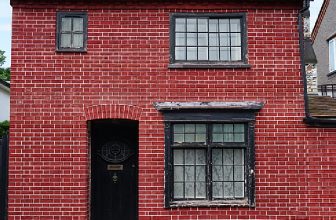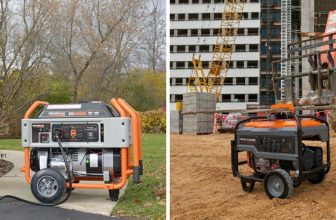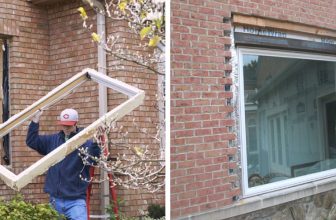How to Soft Wash a House
If you’re considering hiring a pressure washing service to clean the exterior of your home, soft washing can be a great alternative option that is less harmful to your home and more environmentally friendly. With just a few easy steps, you can get results by soft washing your house that is on par with those achieved from power washing.
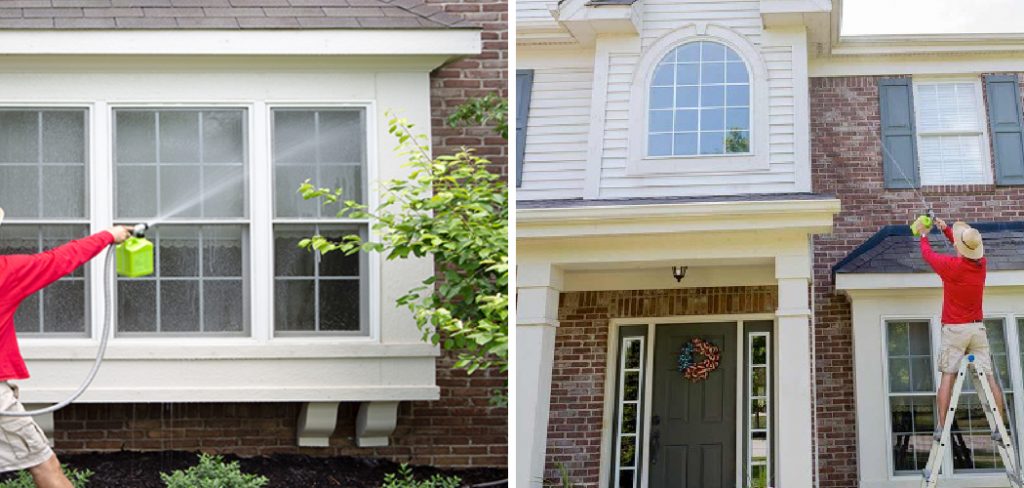
In this post, we’ll go into detail about how to soft wash a house, what soft washing is, how it works and why it may be the best option for cleaning your house. So if you’re curious about how to safely keep the outside of your home looking its best without the hassle or risks associated with high-pressure water blasting systems, read on!
Can I Soft Wash with a Pressure Washer?
Yes, you can soft wash with a pressure washer. The key to successful soft washing is controlling the flow and pressure of the water. You’ll want to use a nozzle or tip that produces a gentle, fan-like spray pattern.
This will help spread the cleaning solution evenly over the surface and reduce any potential for damage from too much pressure. Additionally, make sure your pressure washer is set to low psi (pounds per square inch) when soft washing so as not to harm vulnerable surfaces like wood siding and stucco.
When it comes time to rinse off the cleaning solution, you’ll need to increase the psi slightly in order for proper rinsing, but still, be careful not to overdo it! A good rule of thumb is to not exceed 1500-2000 psi when rinsing. This will ensure no damage is done while still providing enough power to effectively rinse away the cleaning solution.
Soft washing with a pressure washer can be an effective way to clean your house, as long as you remember to keep the psi low and use the right nozzle or tip for a fan-like spray pattern. Following these steps will help ensure the process is safe and successful!
10 Methods How to Soft Wash a House
Soft washing a house is a cleaning method that involves the use of low-pressure water and specialized cleaning solutions to remove dirt, grime, and stains from the exterior surfaces of a house. Here are ten methods for soft washing a house:
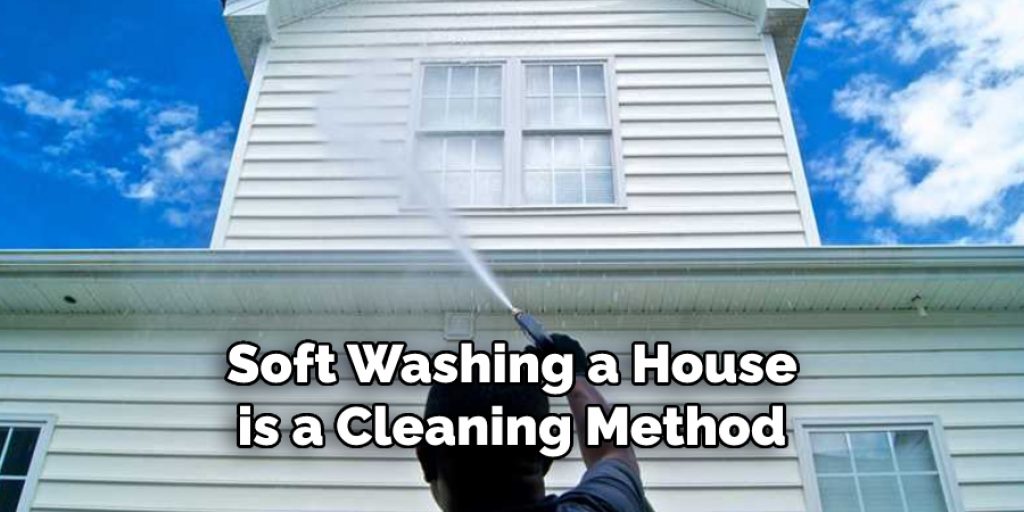
1. Preparation
Before starting the soft washing process, prepare the surrounding area by covering plants and any other objects that could be damaged by the cleaning solution. To ensure the work area is safe, secure any loose items and protect any nearby surfaces.
If possible, set up a ladder and scaffolding to reach the upper parts of the house. While setting up, it is important to use the right personal protective equipment, such as gloves and a face mask. To ensure the best results, make sure to check the condition of the house and identify any areas that will require special attention.
2. Water Source
Ensure that you have access to a water source, either through a hose or a pressure washer. A pressure washer is preferable since it can reach greater distances and provide a more powerful stream of water. This will make the job easier, although a garden hose and nozzle will also do the job.
Make sure that you have an adequate length of hose to reach all parts of the house, and make sure all connections are secure. While using the water source, be aware of any water restrictions in your area. To be a responsible homeowner, it is important to follow all local water usage regulations.
3. Cleaning Solution
Mix a cleaning solution according to the manufacturer’s instructions, or make your own using bleach and water or a specialized cleaner for the type of surface you’re cleaning. Apply the solution to the house with a low-pressure sprayer. Start at the top of the house and work your way down, allowing the cleaning solution to dwell for 15-20 minutes.
This will help loosen dirt and mildew, so it can be easily rinsed away. Use a soft brush or rag to work the cleaner into any crevices, cracks, and corners. Avoid using too much pressure when scrubbing; you don’t want to damage the surface.
4. Application
Apply the cleaning solution to the surface using a specialized sprayer or a garden sprayer. Start at the top of the house and work your way down, making sure to get in all the nooks and crannies. Be sure that you do not oversaturate the surface, as this can cause staining and other issues. Allow the cleaning solution to dwell on the surface for 10-15 minutes before rinsing it off.

To rinse off the cleaning solution, use a low-pressure stream of water from the garden hose. A pressure washer can be used if necessary but should be used with caution as it can damage siding and other surfaces. Allow the surface to dry thoroughly before applying a sealant or coating if desired.
5. Dwell Time
Allow the cleaning solution to dwell on the surface for the recommended amount of time, typically around 10-15 minutes. This allows the solution to break down any dirt and grime and make it easier to rinse off. After allowing it to dwell, you will then need to rinse off the solution with a low-pressure spray.
This will ensure that all of the cleaning solutions are removed from the surface and have done their job. If you do not rinse the solution off, it could end up causing more damage to the surface. To make sure that all of the cleaning solutions are removed, use a non-abrasive cloth or rag to wipe the surface down after rinsing it.
6. Agitation
Use a soft-bristled brush or a pressure washer with a low-pressure nozzle to agitate the cleaning solution on the surface. This will help to loosen stubborn dirt and grime. If using a brush, use a gentle back-and-forth motion. Do not use any abrasive materials, as these could cause damage to the surface.
To ensure maximum effectiveness, move in sections to cover the entire surface. While agitation is not always necessary, it can help break down dirt and debris that are difficult to remove. Though this step should not take more than a few minutes, it can make a big difference in the overall cleanliness of your house.
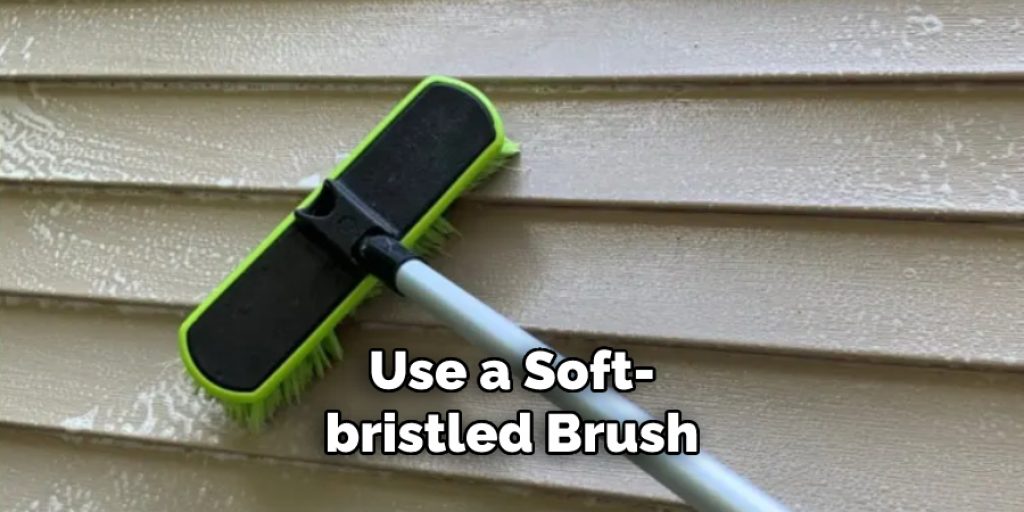
7. Rinse
Rinse the surface thoroughly with clean water using a pressure washer or hose. Make sure to completely remove any remaining soap residue. If using a pressure washer, take extra caution not to spray too hard and damage the surface. After the entire surface has been rinsed, use a brush or broom to remove any remaining residue and debris.
If a pressure washer is unavailable, you can use a garden hose with an adjustable nozzle for rinsing. Allow the surface to dry completely before inspecting the results of your work. While it may not look as pristine and fresh as after power washing, your results should still be more than satisfactory.
8. Repeat
For heavily soiled areas, repeat the cleaning process. Work in sections of the house, one at a time. Once soiled areas are clean, rinse with a low-pressure sprayer to remove any residue. If necessary, you may need to repeat the soft washing process in some areas.
To avoid damage to plants, shut off the sprayer when you are near plants and use a towel or brush to clean them. When finished, it is important to rinse the house down with a low-pressure rinse setting of your pressure washer to ensure no residue is left on the siding.
9. Post-Treatment
Apply a post-treatment to the surface to prevent future growth of mold and mildew. This can be applied with a low-pressure pump sprayer or even a garden hose. Be sure to follow the manufacturer’s instructions for application and rinse any residues away after it has been applied.
If you are applying a sealant, let it completely dry before painting over it. Once the post-treatment is complete, your house should look fresh, clean, and free of dirt, mold, and mildew. Congratulations! You’ve successfully softwashed your house.
10. Cleanup
Clean up the surrounding area by removing any covering and disposing of any cleaning materials properly. Make sure to clean up any spilled water, excess cleaning solution, and debris.
If the house has any windows, make sure to clean them with a squeegee or soft cloth and wipe them down with a glass cleaner. After completing the cleaning process, it is important to rinse the house one final time with fresh water to remove any excess solution that may be present on the surface.

Conclusion
Soft washing can be a very rewarding experience and an excellent way to increase the value of your home. Now that you know the basics of how to soft wash your house, it’s time to get started! Gather your supplies, tie back your long hair, and wear safety equipment prior to starting your cleaning project. Thanks for reading, and we hope this has given you some inspiration on how to soft wash a house!


